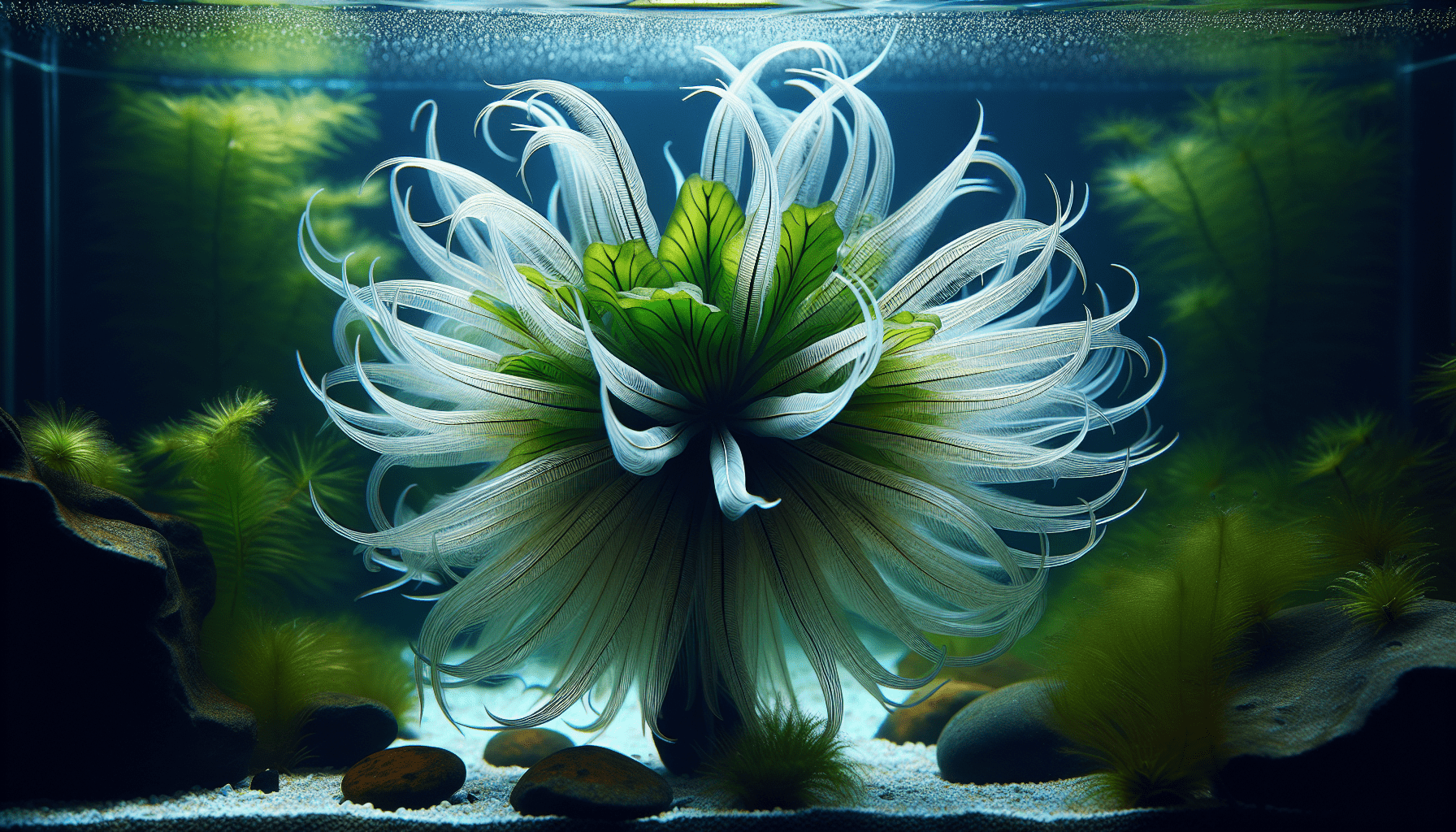In the realm of aquatic botany, the name Aponogeton Natans holds significant relevance. Hailing from the diverse genus ‘Aponogeton’, this particular plant species, often considered as an ‘aquatic weed’, has been a subject of interest for botanists and aquatic gardeners alike. Not only does its taxonomy offer profound insights into plant evolution and biogeography, but its adaptability in diverse habitats also presents a fascinating case study for environmental biologists seeking to understand the intricate balance in aquatic ecosystems. As you embark on this exploration of Aponogeton Natans, be prepared to unveil a marvel of aquatic botany.

Overview of Aponogeton Natans
Definition of Aponogeton natans
Aponogeton natans is a perennial aquatic plant species that belongs to the Aponogetonaceae family. This plant species is most recognized for its floating leaves and unique, tuberous root system. It is widely used both in natural aquatic habitats and artificial aquaria due to its aesthetic appeal and its ability to contribute to a healthy aquatic ecosystem.
General Characteristics
You will find that Aponogeton natans possesses a series of general characteristics to identify it. It has a tuberous rhizome system from which sprout long, ribbon-like leaves that float on the surface of the water. The plant also produces distinct flowers on a stalk that emerge above the water surface, giving it an appealing visual form.
Native Habitat
Aponogeton natans is native primarily to South Asia and is commonly found in Sri Lanka. This aquatic plant thrives most prevalently in freshwater habitats such as ponds, streams, and lakes, particularly those with still or slow-moving water.
Physical Appearance
Size
Aponogeton natans is a medium to large-sized plant species. The floating leaves can grow from 20 to 60 centimeters in length, and the width of the leaves can range from 2 to 6 centimeters.
Shape of Leaves
The leaves of Aponogeton natans are elongated, ribbon-like, and undulate on the edges. They are characterized by having a smooth texture and a bright green color, which can give a vibrant touch to any water body where this plant dwells.
Flower Color and Form
The flowers of Aponogeton natans are quite distinctive. They are small and white, with a slight tinge of pink- a pleasing contrast to the bright green leaves. These flowers form on an inflorescence that emerges above the water.
Form of the Plant Overall
Overall, Aponogeton natans has a unique form that makes it attractive for use in various aquatic settings. It grows with its roots anchored in the substrate, while long, stalk-like petioles support floating leaves on the water surface.
Growth and Reproduction
Growth Rate
Aponogeton natans exhibits a relatively fast growth rate under optimal conditions, with new leaves developing regularly over time to replace any that are shed.
Reproduction Methods
Aponogeton natans predominantly reproduces sexually through seed production. However, it can also reproduce vegetatively from its tuberous root system.
Optimal Conditions for Growth and Reproduction
It thrives best in warm temperatures between 22-28°C, and prefers soft to moderately hard water with a PH ranging from 6.5 to 7.5. Adequate lighting is also needed for it to flourish and reproduce successfully.
Seasons or Periods of Growth and Dormancy
Aponogeton natans exhibits a dormancy period that typically corresponds with the winter season due to cooler temperatures. During this period, the plant’s growth significantly slows down, and fewer leaves are produced.
Habitat and Distribution
Typical Natural Habitats
Aponogeton natans favors freshwater habitats such as ponds, lakes, and slow-moving streams or rivers. It commonly grows submerged, with its lush green leaves floating on the water’s surface.
Geographical Distribution
This aquatic plant is native to South Asia and is most commonly found in Sri Lanka. However, it has been introduced to other regions worldwide, particularly for use in aquaria and ornamental ponds.
Invasive Potential and Reports of Invasions
While Aponogeton natans is not typically considered an invasive species, it does have the potential to spread aggressively in suitable conditions. There have been isolated reports of this plant becoming prolific in certain water bodies, outcompeting native plant species.

Ecological Considerations
Role in the Ecosystem
Aponogeton natans plays several essential roles in its ecosystem. Its submerged roots provide a home for various aquatic organisms, and its floating leaves offer important shelter for fish and other aquatic creatures.
Potential Impacts on Water Quality
This aquatic plant also aids in maintaining good water quality by absorbing excess nutrients from the water. This reduces the chance of harmful algal blooms, leading to a healthier ecosystem overall.
Interactions with Other Plant Species
Where Aponogeton natans is native, it shares habitats with a diversity of other plant species and typically coexists without excessive competition, contributing to a balanced ecosystem. However, where it is introduced, there may be competition with native species.
Use as a Food Source by Animals
Certain species of fish and waterfowl use Aponogeton natans as a food source, feeding on both the leaves and the tuberous roots.
Possible Threats to Aponogeton Natans
Threats from Pollution
Pollution, particularly in the form of water contamination by metals, can be detrimental to Aponogeton natans. While the plant can tolerate lower levels of pollution, high concentrations of hazardous pollutants can stunt its growth and may eventually lead to the plant’s death.
Threats from Climate Change
Changes in temperature due to climate change present significant threats to Aponogeton natans. Increases in temperature could alter its distribution range or impact its growth and reproduction cycle.
Threats from Human Activities
Activities such as overharvesting, habitat destruction due to development, and the introduction of invasive species pose severe threats to Aponogeton natans.
Use in Aquaria and Ponds
Benefits for Aquarium and Pond Ecosystems
Not only does Aponogeton natans add aesthetic appeal to aquariums and ponds, but it also contributes positively to the ecosystem by maintaining water quality and providing habitat and food for aquatic life.
Common Care Requirements in Aquariums and Ponds
To thrive in an aquarium or pond, Aponogeton natans requires warm water, adequate lighting, and enough space to accommodate its wide, floating leaves. Regular pruning might be required to maintain its size.
Potential Problems or Challenges
Despite its benefits, Aponogeton natans can also present challenges. For example, its fast growth rate requires regular pruning to prevent it from shading other plants or overcrowding the water body.
Recommended Water Parameters
Aponogeton natans thrives in a pH range of 6.5-7.5, prefers soft to moderately hard water, and requires temperatures between 22-28°C.
The Propagation of Aponogeton Natans
Propagation Methods used by Hobbyists
Vegetative propagation is most commonly used by hobbyists due to its relative simplicity. This involves dividing the tuberous roots to produce new plants.
Tips for Successful Propagation
For successful propagation, provide the plant with ample lighting, warm temperatures, and regular fertilization to ensure plenty of nutrients for growth.
Common Problems in Propagating
In contrast, problems can arise if the plant does not receive the correct light intensity or temperature range, which could impact seed germination and plant health.
History and Cultural Significance
Historical Uses and Cultural Significance
In South Asia, particularly in Sri Lanka, Aponogeton natans has been traditionally used in cooking and has cultural significance as a food source in some communities.
The Role in Religion, Folklore, and Mythology
While there are no specific references of Aponogeton natans in religious texts, folklore, or mythology, aquatic plants in general have spiritual significance in many Asian cultures, symbolizing purity and the interconnectedness of life.
Significance in Scientific Research
In scientific research, Aponogeton natans has been studied for its ability to purify water by absorbing contaminants, which may have implications for improving water treatment systems.
Conservation and Management Strategy
Conservation Efforts
Given the threats faced by Aponogeton natans, conservation efforts are centered around habitat protection, pollution reduction, and educating the public about the plant’s ecological significance.
Principles of Aponogeton Natans Management
Managing Aponogeton natans involves finding a balance between using the plant for ornamental purposes and ensuring it does not become invasive in non-native habitats.
Management Strategy Examples
Strategies include regular monitoring of population dynamics, controlling its spread in non-native habitats, and providing guidelines for hobbyists who intend to introduce this plant into their aquaria and ponds.
Challenges in Aponogeton Natans conservation and Management
Challenges lie in the aspects of monitoring and controlling its spread, especially in areas where it is introduced outside its native range. Also, promoting the preservation of its natural habitats against human-induced threats is a priority that requires ongoing effort.